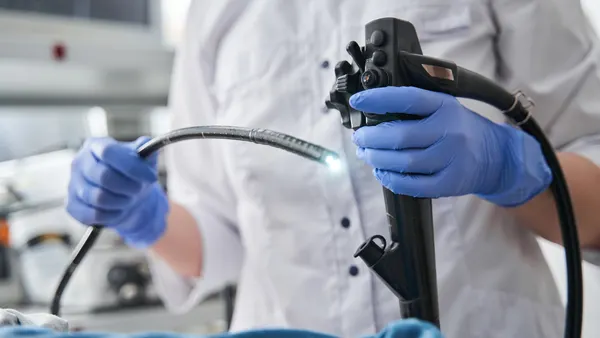Dive Brief:
-
The FDA has cleared Ansh Labs' menopause test for use under its De Novo premarket review pathway.
-
Ansh's test, PicoAMH Elisa, measures levels of a hormone to gauge whether a woman has had or is approaching her final menstrual period.
-
The FDA thinks knowledge of menopausal status can inform preventative actions against conditions women are vulnerable to at that stage of life, such as osteoporosis and heart disease.
Dive Insight:
The changes women go through during the menopause raise the risk of certain conditions. As the production of estrogen and progesterone varies, bone density decreases, making women more likely to suffer fractures. Levels of low density lipoprotein, a form of cholesterol, can increase. The changes to the lipid profile raises the risk of heart disease.
Forewarned about these changes, women and their healthcare providers can take steps to mitigate their effects and thereby cut the risk of osteoporosis and heart disease. However, the limitations of clinical assessments means it can be hard to determine menopausal status.
Ansh developed PicoAMH Elisa to give physicians another source of data to inform their assessments. The test measures levels of anti-Müllerian hormone (AMH) in the blood. As AMH is made by ovarian granulosa cells, researchers have posited that levels of the hormone will decline steadily as women approach the transition to menopause.
The idea was put to the test in an assessment 690 women aged 42 to 62. While the results were strong enough to get the test cleared for use, the FDA gave a somewhat muted endorsement of its effectiveness, noting that it "performed reasonably well" at two tasks: measuring AMH and identifying women who had either had their last menstrual period or were more than five years away from doing so.
That assessment chimes with data previously published by Ansh and its collaborators. In 2016, the collaborators published results from 1,560 women enrolled in the Study of Women’s Health Across the Nation (SWAN), the same study that formed the basis of the FDA De Novo submission.
Analysis of AMH in the 1,560 women showed 50% of people with very low, sub-10pg/mL levels of the hormone went on to have their final menstrual period in around the next 12 months. At the other end of the scale, women with AMH levels above 25pg/mL had a 2.5% chance of having their final period in the next two years.
The FDA is advising physicians to view PicoAMH Elisa test results alongside clinical assessments and other laboratory findings. Relying solely on AMH data could lead women to stop using contraceptives too soon, or to physicians failing to realize that uterine bleeding is due to endometrial cancer.
In clearing the test under its De Novo pathway for novel but low-to-moderate risk devices, the FDA has created special controls setting out its expectations about the performance and labeling of menopause diagnostics.












